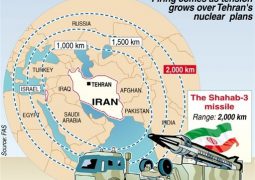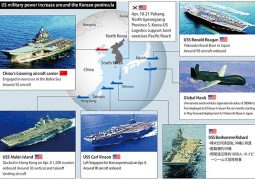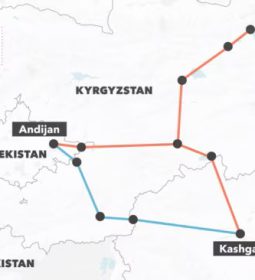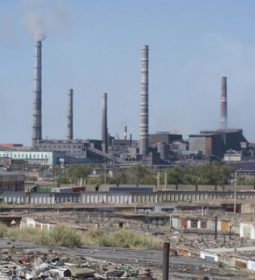Malaysia’s right to stake claim to Spratlys
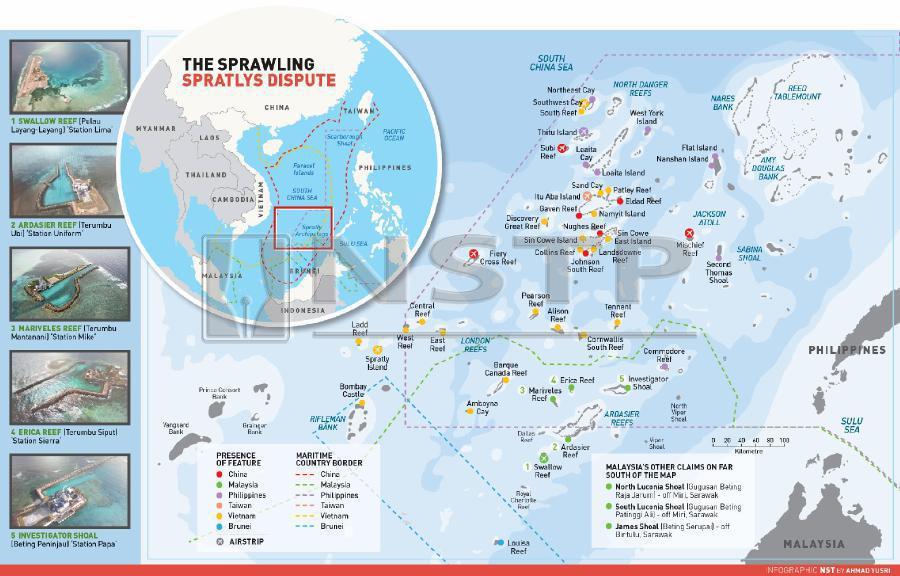
Malaysia’s right to stake claim to Spratlys
By Andrian David – March 2, 2019 @ 11:05pm
MALAYSIA has every right to stake a claim to territories within its legitimate boundaries in the South China Sea, in accordance with maritime laws.
Defence experts said these included the constellation of islands, cays, reefs and shoals that make up the Spratlys archipelago.
Taking a cue from Prime Minister Tun Dr Mahathir Mohamad’s recent comments, many are of the opinion that Malaysia should be proactive in staking its claims.
There is much at stake — from marine life, migratory birds, and hydrocarbon deposits (oil and gas), to the untapped tourism potential and about US$5 trillion (RM20.3 trillion) worth of global trade that passes through every year.
Malaysia arguably has the biggest estimated oil reserves — five billion barrels — and gas reserves of 80 trillion cubic feet in the South China Sea.
“Our claims are irrefutable, except in areas where our neighbours’ claims overlap ours,” said Rear-Admiral (Rtd) Tan Sri K. “Bob” Thanabalasingam, Malaysia’s first local Royal Malaysian Navy chief.
The Spratlys dispute involves Malaysia, Brunei, the Philippines, Vietnam, Taiwan and China.
Thanabalasingam said Malaysia’s claims were fully justified under the United Nations Convention on the Law of the Sea (UNCLOS) covering the exclusive economic zone (EEZ).
He said China’s nine-dotted claim — a vaguely defined demarcation by the Asian superpower in the South China Sea — was illegal as there was no provision about historical rights.
“In fact, China’s claims are ridiculous because they extend through our EEZ, close to our territorial waters off Sabah and Sarawak.
“Even if they go back 100 or 1,000 years, they never exercised their claims, which are well beyond their EEZ, until recent times,” Thanabalasingam said, adding that the UN Tribunal that heard the Philippines’ case against China also found the latter’s claim to be illegal.
He echoed concerns by many over military exercises by some countries around the Spratlys, which were threatening the freedom of navigation, either at sea or in the air.
Rear-Admiral (Rtd) Tan Sri K. Thanabalasingam
Malaysia’s seriousness on the Spratlys issue was expressed by Dr Mahathir during his first term as prime minister, said Thanabalasingam, who had assisted the federal government at the International Court of Justice (ICJ) in The Hague during Malaysia’s dispute with Singapore over Pedra Branca (Pulau Batu Puteh), Middle Rocks and South Ledge, in the east of the Singapore Straits.
He said Dr Mahathir had decided at the time to establish manned stations at some of the places in the South China Sea which Malaysia claimed.
A senior defence industry analyst said Dr Mahathir’s return to power as prime minister in May has seen him take into account the need not to jeopardise China’s trade and investment links with Malaysia.
“He is employing diplomacy through an Asean initiative to resolve disputes with China, which is laying entire claims on its ‘nine-dotted line’ maritime boundary.
“Dr Mahathir is all for freedom of navigation through the Spratlys and naval patrols to ward off pirates and other criminals. However, he is against the deployment of large warships, which could spark confrontations and tensions among stakeholders,” said the analyst, who declined to be named.
On Feb 21, during a visit to the Defence Ministry, Dr Mahathir said Malaysia’s strategic location exposed it to numerous threats from superpowers, which could drag the country into their conflicts.
Captain (Rtd) Martin A. Sebastian
“This is where we need to exercise appropriate diplomacy, without compromising our sovereignty. We need to be non-aligned not only to superpowers, but also friendly with large and small nations for mutual benefit,” he said.
The Maritime Institute of Malaysia’s Centre for Maritime Security and Diplomacy head-cum-senior fellow, Captain (Rtd) Martin A. Sebastian, supported Dr Mahathir’s initiatives.
“When Malaysia started installing offshore military stations in the 1980s and 1990s, it affirmed our claim to the country’s northernmost maritime territories.
“Although Vietnam’s stations Amboyna Cay and (the smaller) Spratly Island are within Malaysia’s EEZ maritime boundary, Malaysia maintains the status quo with peaceful co-existence,” said Sebastian, a retired senior RMN officer, who served in military operations at Malaysia’s outposts in the Spratlys.
He said Malaysia maintained five offshore stations there.
Swallow Reef (Pulau Layang-Layang), 300km from Kota Kinabalu, Sabah, has been turned into an artificial island (Pulau Layang-Layang) with a holiday resort, alongside RMN’s “Station Lima”.
“The Luconia Shoals (both north and south), 100km from Miri, Sarawak, has been turned into a marine park.
“Other low-tide elevations are patrolled and guarded by the armed forces and the Malaysian Maritime Enforcement Agency against intrusion and encroachment,” said Sebastian.
Malaysia has claimed Swallow Reef, and secured Erica Reef (Terumbu Siput), Investigator Shoal (Beting Peninjau), Mariveles Reef (Terumbu Mantanani), Ardasier Reef (Terumbu Ubi) , the North Luconia Shoal (Beting Raja Jarum) and South Luconia Shoal (Beting Patinggi Ali).
The Commodore Reef (Terumbu Laksamana), Amboyna Cay (Permatang Amboyna Kecil), Barque Canada Reef (Terumbu Mascado) and James Shoal (Beting Serupai) are also within Malaysia’s EEZ.
Sebastian said Malaysia should protect her marine living resources in the South China Sea, as the Fisheries Department had said the country lost RM6 billion a year to illegal fishing.
“Too much emphasis has been given to marine non-living resources, which are non-renewable but bring in a lot of money. Marine living resources are renewable, feed the nation and bring in foreign revenue, if managed properly.
“It enriches the economy of coastal communities. It is imperative to preserve marine living resources as depletion will make us dependent on the available resources,” said Sebastian.
He called on the authorities to combat illegal fishing around the Spratlys as it could cause environmental damage and degradation.
Area a key shipping route, connects Pacific Ocean, SE Asia
By Adrian David – March 2, 2019 @ 11:06pm
KUALA LUMPUR: If Richard Spratly were alive today, he might not be able to comprehend the enormous attention his discovery has grabbed in the South China Sea over a century later.
The British whaling captain spotted the archipelago of islands, islets, cays and more than 100 reefs, sometimes grouped in submerged atolls, while on an expedition in 1843.
Today, Malaysia, Taiwan, China, the Philippines, Vietnam and Brunei are scrambling with disputing claims over parts of the “gem”, which contains less than 2sq km of naturally-occurring land area, spread over 425,000sq km at sea.
The Spratlys is referred to as Kepulauan Spratly by Malaysia, Nansha Qundao by China, Kapuluan ng Kalayaan by the Philippines and Quan da Truong Sa by Vietnam.
A source familiar with the development concerning the Spratlys said it was a key shipping route, where about US$5 trillion (RM20.3 trillion) worth of global trade passes through every year, connecting the Pacific Ocean and Southeast Asia.
“The islands have no indigenous inhabitants, but offer rich marine life, minerals, significant hydrocarbon deposits (oil and natural gas reserves).
“They are also a tourist attraction and a haven for migratory birds. All these are worth trillions of dollars!”
She said some of the islands had civilian settlements, mainly fishermen and other environmental observers.
However, Malaysia, Taiwan, China, the Philippines and Vietnam have established military outposts on some of the estimated 45 islands, cays, reefs and shoals to boost their claims, interests and sovereignty within their 200 nautical-mile exclusive economic zone (EEZ).
“Brunei has also claimed the uninhabited Louisa Reef in the southern part, as within its EEZ,” she said.
Malaysia’s claims are to the southernmost area encompassing the Royal Malaysia Navy’s Station Lima at Swallow Reef (Terembu Layang-Layang), occupied since 1983, Station Mike (Terembu Mantanani or Mariveles Reef) and Station Uniform (Terembu Ubi or Ardasier Reef), both occupied since 1986, Station Sierra (Terembu Siput or Erica Reef) and Station Papa (Beting Peninjau or Investigator Shoal), both occupied since 1999.
Malaysia has also laid control of the North Luconia Shoal (Gugusan Beting Raja Jarum) and South Luconia Shoal (Gugusan Beting Patinggi Ali) — 100km off Miri, Sarawak — and James Shoal (Beting Serupai), 83km northwest of Bintulu, Sarawak.
THe New Straight Times
- Previous Taliban Sees Troop Withdrawal As Key To Peace
- Next Malaysia holds 86th Army Day in historic Sangai Siput



